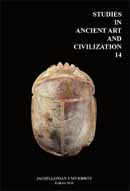Ancient barrows in North-Pontic area: origin – evolution – decline
Ancient barrows in North-Pontic area: origin – evolution – decline
Author(s): Wojciech MachowskiSubject(s): Archaeology
Published by: KSIĘGARNIA AKADEMICKA Sp. z o.o.
Summary/Abstract: A characteristic feature of the necropoleis of ancient cities on the northern Black Sea coast was the relatively large number of earthen mounds – barrows or tumuli (Russian: kurgans) (Machowski 2005; Machowski 2009). There are many different opinions concerning their genesis and when they first appeared. We know of various attempts to explain these issues. Many researchers, such as V. F. Gaidukevich (1971, 258), have connected barrows with local traditions. A similar view is expressed by G. A. Tsvetaeva (1957, 227-228), who links the appearance of kurgans in the Archaic period with Scythian customs. S. D. Kryzhitskii (1993, 75), who notes the lack of ancient barrows on the Black Sea northern coast and – at the same time – their widespread occurrence in Scythian territories, also recognizes Scythian traditions as the most probable source of the origin of barrows in North-Pontic Greek necropoleis. According to these opinions, the custom of erecting kurgans on the necropoleis of North-Pontic ancient cities could have derived from the tradition of local tribes whose members were buried there as well. The process of merging the barbaric and Hellenic cultures supposedly led the Greeks to adopt the custom and to follow this burial rite starting from the turn of the 5th century BC to the 4th. This hypothesis is based mainly on the assumption that Greek tumuli burials did not appear earlier than this time and that all previous burials of the kind were performed by local Scythian tribes.
Journal: Studies in Ancient Art and Civilization
- Issue Year: 2010
- Issue No: 14
- Page Range: 115-134
- Page Count: 20
- Language: English

